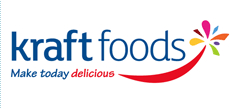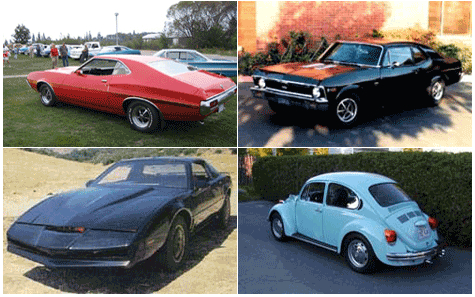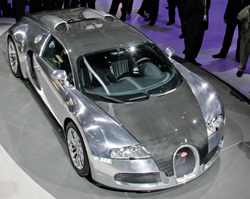Quick linguistic review. From the Greek, homo- = same.
 On Twitter the other day, I clicked on a URL that normally wouldn’t interest me, but for some reason caught my eye. It was about the new Kraft corporate logo:
On Twitter the other day, I clicked on a URL that normally wouldn’t interest me, but for some reason caught my eye. It was about the new Kraft corporate logo:
Read the whole article, because it’s instructive, and I’ve been thinking about that off and on ever since. I don’t know why. Then I saw Sunday’s Wal-Mart insert and saw its new(ish) logo:
 Do you see a difference?
Do you see a difference?
Most of you will, I’m sure, since they’re back to back, but I, in all my ADDness, will glance and not see anything of import to differentiate the two. Thus, I will gloss over both. I’ve seen many other, similar logos, but I couldn’t tell you what companies they belonged to. I guess that’s my point.
I follow several different blogs that talk about social networking, branding, marketing, etc. because I know zero, zilch, nada about all this bullshit and I’d really rather not learn. However, it seems to me, in all my naïveté, that you would want your brand/logo to stand out, no?
All the writerly/agently/editorially blogs talk about branding one’s writing. Do we have logos or don’t we? How does one “brand” something that is, inherently, about … you? You have one product, or two, maybe sixteen, but really the product is you. If you have a following, your following buys you. If people don’t like your product, people don’t buy you. You are identifiable by your name.
But then there’s something like this:

Okay, I’m as much a sucker for matching anything and thematic continuity as the next fashion-obsessed girl, and don’t mistake me—these are gorgeous covers and put ’em together like this, they look plenty different. But put me in a bookstore without a list and I won’t remember which one I have and which one I don’t. What’s scary is that I could chalk that up to my gnat-like attention span or my ADD, except I’m not the only one with the complaint. By far.
It’s not just corporate brands or book covers. It’s cars, too.
 When I was in high school, a girl in my class had a ’72 Torino. A guy had a ’69 Nova. Another had a KITT car. I drove a ’72 or ’73 Beetle (one of those freaks of nature with the auto
When I was in high school, a girl in my class had a ’72 Torino. A guy had a ’69 Nova. Another had a KITT car. I drove a ’72 or ’73 Beetle (one of those freaks of nature with the auto-clutchstick). Occasionally. I used to be able to tell what car was what, and possibly the year.
But now?
 They all look alike. It was annoying when I didn’t have a vested interest in cars, but I went looking for a luxury car for Bishop Steel Baron (Magdalene, book 3) and I found … nothing that would differentiate a luxury car from a cheap Saturn, it was downright maddening. Are you kidding me? All this time I’ve been attributing that to the laws of aerodynamics and that’s probably the most likely explanation for it, but across the brand/corporate spectrum, from Saturn to Volvo, from economy to luxury, from SUV to SUV, the vast majority look alike.
They all look alike. It was annoying when I didn’t have a vested interest in cars, but I went looking for a luxury car for Bishop Steel Baron (Magdalene, book 3) and I found … nothing that would differentiate a luxury car from a cheap Saturn, it was downright maddening. Are you kidding me? All this time I’ve been attributing that to the laws of aerodynamics and that’s probably the most likely explanation for it, but across the brand/corporate spectrum, from Saturn to Volvo, from economy to luxury, from SUV to SUV, the vast majority look alike.
I put him in a Bugatti, in case you’re wondering.
Don’t get me started on tract housing, and that includes McMansions.
I know it’s human nature to be drawn to the familiar, but humans also like variety. I’m feeling a bit of brand oppression. The smoothing out of fonts, the smiley faces and flowers, the streamlining, the … aerodynamics.
Am I missing something? I thought branding was about differentiation. If people can’t tell you from someone else, how do they know to throw their money at you?

The Roman Catholic Church was an early brand. They even had logos (cross, fish).
I think Joseph Goebbels was a master of the brand (simplify and repeat). I think he actually invented modern advertising.
Of course as writers we must brand ourselves also. Mine was problematic. The magic was based on being reuniting with the love of my life. But there was an awkward reality moment when I had to get a divorce to realize the dream. I quickly figured out that that is an “oops” moment in Romance circles.
I think there are questions to ask yourself.
Do you want to be Nora Roberts and write books with interchangeable parts? Yes there is a ton of money there to be had — if you hit — probably harder than winning the lottery, given the zillion others pursuing that brass ring.
Or do you want to write something that pleases you and your inner circle, then work out from there?
It’s clear what I think. To your own self be true. In the overall scheme of things, creating art is wonderful in itself. Yes, it would be lovely to have recognition — and money — but I am a believer. I think creation is the goal and anything else is just gravy.
Well, there are the leaders of the pack (FedEx, etc) that actually want to differentiate themselves, and then there are the next rung that want lookalikes or soundalikes or basically to surf on the leader’s wave of popularity and branding.
The other day my husband and I, trained to think of a specific font as being that of a modern, clean restaurant, looked closer to find a clothing store. The font did not work for a clothing store but we would have gone back someday if it were a restaurant…
Anyway, my pt is, sometimes you want to be different and sometimes you want to capitalize on someone else’s prior success.
I want the unique way I tell a story to BE the brand. So I guess you could say I want my cake and eat it too. If people like what I have to say and how I say it, and they know they can’t get that anywhere else, then I’ve branded myself effectively.
I think.
Maybe.
But see, the examples I gave ARE the front-runners and have been for decades. It’s like they’re regressing, trying to blend back into the pack.
That’s where my confusion lies.
When I was in high school, I had a powder blue 1983 Dodge Aries K Car station wagon. FIVE SPEED. It was simultaneously homogeneous and freakish. It was the duckbill platypus of 1980’s American cars.
MoJo:
Branding is supposed to be about differentiation, but the huge irony of marketing is that either marketers don’t have the guts to really do it — or they are overruled by CEOs who don’t have the gut to really do it.
And don’t get me started on the crazy number of line extensions that are out there.
Branding businesses is a financial and behavioral science…but there’s no SOUL behind most of it. It’s all stimulus/response and what’s safest for the bottom line.
There’s an occasional trailblazer out there, but sameness rules. You gotta make people feel comfy if you want them to spend their money. Sameness rules because although people talk about differentiation, it’s not a creative sort of difference; being *too* different is a risk.
But the right way to do it, especially when it comes to anything creative, is to do what you said. The unique way you tell a story is what truly makes your literary brand (a better word might be identity), and any packaging or marketing after that is relatively superficial (if getting a book in front of buyers can be called superficial, that is). 🙂
Wm, could you expound? I don’t know what line extensions are. (Or at least, I don’t know them by that label.)
But, Ing, I guess I don’t understand WHY Wal-Mart (and, by the way, did they change their official spelling, too?) and Kraft felt a NEED to re-brand and especially regressively into Yawnsville.
I HAVE to believe that because I only know a few authors’ names off the top of my head that I could remember if standing in front of a shelf of books. I remember them because I remember their way of telling stories and that I like those ways.
Line extension is where you take an existing product and slightly tweak it in the hopes of appealing to consumers who wouldn’t buy your core brand. Diet Coke is a line extension. So are vanilla Oreos. The problem, of course, is that in many cases, you end up cannibalizing your core brand rather than attracting new consumers.
Al Ries and Jack Trout, two major Marketing gurus, are deadset against line extensions. They prefer the model of creating a new product if there is a definite demand for that type of product and if you can enter that market and dominate it. In other words, they think that Tab was a better idea than Diet Coke.
I tend to agree although I don’t quite share their dogmatism on the subject. But marketers love line extensions because they mean a whole new set of packaging and advertising, etc. — but without the risk of starting a whole new brand. They’re easy to do and if they fail and you have to kill off the line extension not as many people lose jobs or accounts.
Of course, this thinking has led to major absurdities, esp. in the domestic beer and soda markets where there are just way too many products.
Thank you, Wm. I’ve stopped buying products when they got too complicated like that because I couldn’t tell what it was by the packaging in the first glance. Happens especially with “lite” and “sugar-free” and “fat-free” versions of a product.